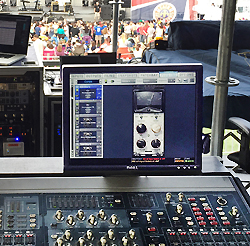
One skill quickly learned “back in the day” was carefully selecting and pairing available outboard gear to achieve a certain sonic character.
Once experienced enough in the matter, any good engineer would easily be able to throw together a rack that combined multiple characteristics – the warmth of a particular compressor tied to the character of a particular EQ, for example.
Keeping this philosophy in mind helps when assembling plugins on a limited budget, and while I could list hundreds of excellent combinations, it’s up to you to take a listen and make a determination of what you want/need in general and/or for a particular project.
Further, even with numerous options in terms of bundles readily available, it still often makes more sense to choose a unique flavor combination of individual plugins. Bundles are more pricey and much of what’s in them may go largely unused.
While the answer to the question “What’s the best?” is often very subjective, a few basic, affordable plugins that every engineer should consider carrying in their virtual outboard rack includes the following:
Waves C6 Multiband Compressor. A “magic” plugin that makes life so much easier. The C6 has the ability to focus in on six frequency bands and introduce frequency-dependent compression on each frequency “zone.” This makes it a very powerful tool because it allows you to correct problems in key elements of the mix while maintaining as much frequency response integrity as possible. Primary applications, among many, include curing the inevitable cupped-mic hip-hop vocal as well as optimizing podium or lav mics in corporate settings.
Waves Renaissance Vox. Part of the inexpensive Musician’s Bundle, R-Vox can help get you out of some very sticky situations. Combining gating and compression/limiting, it’s a first choice for vocal tracks or vocal groups. As a limited-setting plugin, there aren’t tons of options for customization, but don’t be fooled by the simplicity; R-Vox is a popular tool for very good reason.
SPL Transient Designer. I find that it cleans up a mix better than anything else I’ve come across. Based on the hardware Transient Designer rack, with one-knob access it removes or increases sustain and attack from a track or group. It can be used to make kick, snare, and toms jump out of a mix, as well as help with key-heavy or track-heavy mixes. In short, it assists in fixing problems that would normally take a combination of EQ and compression.
Waves Kramer PIE & HLS Channel. Part of the Signature Series and based on the vintage Pye compressor and Helios console input channel EQ, it provides a silky, warm vintage compression/EQ combo that upstages most basic channel strip functions. This is my go-to combination when I want a warm, round sound with flexible options, especially on drum and vocal groups.
Native Or Server?
Many Avid consoles, such as the VENUE Series (including the new S6L), can run plugins – just install, insert the license key, and it’s good to go. The plugins are easily insertable throughout the channel strips and outputs.
However, many consoles require the support of Native or Server configurations. Native utilizes a computer’s CPU, so the number of plug-ins that can be run, as well as the overall system latency, is dependent upon the CPU and sound driver capabilities of the computer.

